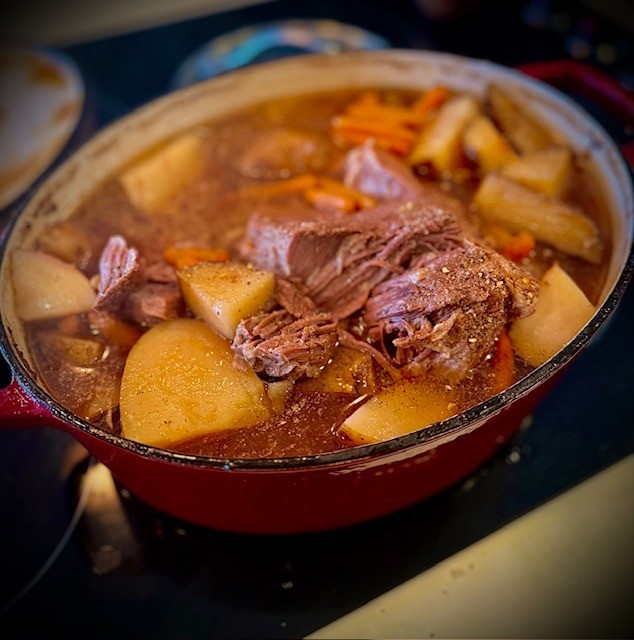We're feeding our cows WHAT?!
posted on
September 27, 2024
All hands-on deck: no doctor notes during silage week.
Sweater weather is here! September means back to school and silage season at Parsons Creek. Silage brings to life the rumble of tractors, corn debris in the air, everyone works sun up to sun down. And I do mean everyone!
What is silage?
The technical definition of silage is “preserved forage-like pasture (grass), alfalfa, grains, or corn.”
The beauty of silage is it takes minimal acres to feed a lot of cows. At Parsons Creek, we plant a bunch of corn on just a few acres, and that yields enough for our herd through the winter. Plus, we find it to be the best feed for our purebred Angus herd— they absolutely LOVE it!
Why do we make it? What do we do with silage?
Like all plants, our pasture grass goes dormit in the winter with the snow and wet. But our cows still need to be fed! That's where silage comes into play.
Each morning throughout the winter, we put hay and silage in a big blender to supplement our herd’s feed. Our herd nutritionist tests our hay (protein and nutrient levels) and tells us how much silage we need to mix in for optimal nutrition.
But we use silage throughout the rest of the year, too. We feed our calves silage as an intermediary when they’re learning how to graze on their own. And when we’re finishing cows, we dump silage in lines on the ground and the cows follow along, eating the hay and silage mixed together. They love it.
What’s the process like for making it?
Long story short, we harvest the corn, grind it up into chunks and ferment it in a pit. Although the process seems minimalistic, that doesn’t mean its quick or easy. There’s a good two weeks in early September where all we do is chop silage. Kids to grandparents, it’s all hands on deck.
I asked Christian (my brother, the farmer) for a little bit more of an explanation: “We plant corn in the spring - let it grow - get it over ripe - then we chop the entire plant stalk. The only thing not harvested is the roots.
Then we pile ours in a pit to ensile, and pack it tight-tight-tight.

Once you cut off the oxygen it will ferment. It’s the natural process of preserving something - equivalent to Nanny canning tomatoes,” he told me.
Why corn silage?
We make and feed corn silage here at Parsons Creek. Corn naturally has a high sugar and starch content which helps our cows survive and thrive through the winter months.
We find finishing cows with corn silage, makes the end product taste that much better.
What are the benefits of silage?
Another reason we grow corn is that it acts as a cover crop. It fixes nitrogen in the soil, and keeps the ground covered.
Once we finish chopping the corn, we go in right away with our no-till drill (remember our last blog?) and start planting the next cover crop before the weeds get a chance to take hold. And these next cover crops are especially important because these will be the ones that stay in the ground till Spring.
Is the hard work worth it?
When you're surrounded by family on days of work or rest, it's easy to say: yes, it’s absolutely worth it.




